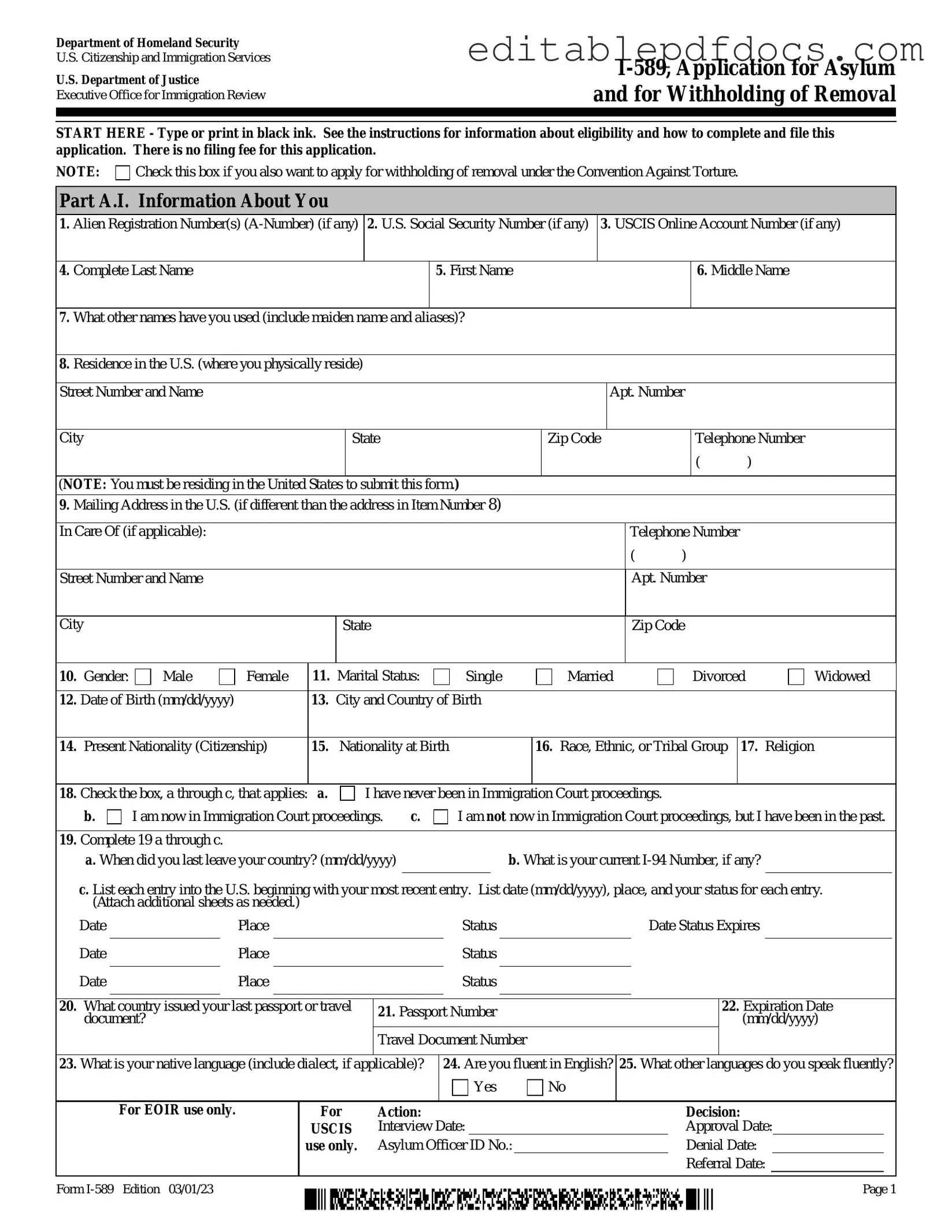The USCIS I-589 form is a crucial document for individuals seeking asylum or withholding of removal in the United States. It serves as a formal request for protection, allowing applicants to present their case to immigration authorities. This form is designed for those who fear persecution in their home country due to factors such as race, religion, nationality, political opinion, or membership in a particular social group. Completing the I-589 involves providing personal information, detailing the reasons for seeking asylum, and outlining any past experiences that contribute to the fear of returning home. It's important to note that the application must be submitted within one year of arriving in the U.S., although there are exceptions to this rule. The process can be complex, often requiring careful documentation and a thorough understanding of the legal landscape. By navigating the I-589 form effectively, applicants can take a significant step toward securing their safety and a new beginning in America.
